Are you ready to design culturally responsive lessons, but are not quite sure where to start? Trust me, you are not alone. The good news is that today, I am going to pull up a (virtual) chair beside you and we will talk through a few strategies together. Excited yet? Me too.
A Framework to Consider
While I plan each unit, the first two questions I ask myself are, “What is the bigger picture?” and “What will students learn that transcends the curriculum?”
As educators, it is our responsibility to help prepare our students to interact and engage in the adult world. So, there is always a bigger picture. There are always points of connection beyond the curriculum standards.
I recently read an article interviewing Gholdy Muhammad, author of Cultivating Genius. In the article she talks about her four-part equity framework for approaching instruction. The four components are: 1) identity development; 2) skill development; 3) intellectual development; and 4) criticality.
Reading about this framework was like a light bulb. It illuminated the process I have been using for years to design my culturally responsive lessons. In particular, there is a section of the article where Gholdy shares some questions that she encourages teachers to ask while designing lessons inside of the framework. One question struck me as a golden connection because it is one that I always ask myself and the teachers I coach. That question is, “How does our curriculum and instruction help students to learn about themselves or others?” While I won’t go into detail about each component, I highly encourage you to read the article and her book. I believe many light bulbs will switch on for you, as they continue to do so for me.
Designing Culturally Responsive Lesson Plans – Starting Place
What I will share today is the starting place. After I consider the bigger picture, I then look at each lesson within the unit of study and ask myself three questions:
- What are my students learning about themselves?
- What are my students learning about their peers (locally, nationally, globally)?
- What are my students learning about the world around them?

What are Your Students Learning About Themselves?
When answering this question, go back to the original thought you had about what the students will learn from this material that transcends the curriculum. Maybe you have chosen the concepts of perseverance and accountability. What will students understand about these concepts, and how can you teach them through your curriculum? Finally, what will the students understand about their ability to persevere? What will they understand about the importance of holding themselves accountable and allowing others to hold them accountable?
To take this idea one step further, have students think about the messages that surround them culturally, and how those messages influence their ideas about perseverance and accountability.
- Are more students already familiar or unfamiliar with these concepts because of family or friends, etc?
- Does the student view these concepts as important? Attainable?
Have students dialogue or just engage in individual reflection about how their exposure, or lack thereof has affected them as learners.
Helping students to see the relatable “why” behind the “what” encourages them to engage more fully with the lesson. For once, it is not just about the Pythagorean Theorem, it is about the fact that the students have persevered along the path to understanding this concept. In addition, it is about the students working as a team in accountability pods to ensure that everyone understands the lesson. Collaboration over competition.

What are Your Students Learning About Their Peers?
Understanding and respecting that there are a diversity of perspectives is important. Exposing students to differing perspectives allows for open discussion about the reason for differing perspectives. For some students it may develop a deeper appreciation for their own perspective, while other students might change perspectives.
As you consider the aforementioned question, I encourage you to pause and consider these ideas:
- What perspectives do the students in your class bring with them?
- Regardless of whether your students all identify with the same gender, racial, or religious group, how are each of their perspectives unique because of things like socioeconomic status, number of parents in the household, siblings, exposure to social media, etc.
- What perspectives are missing, but can be included through articles, podcasts, blogs, Youtube videos, etc.
- Shift the definition of peers from just the people in the classroom, to those in a classroom in another state, or another country. Technology is making our world smaller and more accessible.
The more students are introduced to the beautiful diversity of our world, the less they will react out of fear or haste when encountering something unfamiliar.

What are Your Students Learning About the World Around Them?
Our classrooms can be isolated spaces where there is tunnel focus on “just school” and getting to the next standard, the next grade level, the next … The reality however, is that once we leave the school and our students leave the school, the real world is there. So, how can we as educators help our students learn the skills and strategies for successfully engaging in the world around them.
- What social, political, economic, health, financial happenings can be brought in to the classroom and used as real world examples of how to solve or resolve problems, negotiate deals, defend a point, or collaborate for success?
- What resources can be used alongside textbooks to enhance the lesson?
- What authors, local representatives, business owners, etc can partner with you and your students to engage in meaningful discussion and application of theoretical lessons to real world situations?
The more we help students learn to reflect on who they are, engage with diverse perspectives, and critically think about the world around them, the more successful they will be in navigating the world as adults. Successful self-reflection, appreciation for diversity, and viewing world situation with a critical lens takes years of practice. Let’s start now by creating culturally responsive lessons.
I have found that asking these three questions helps me design culturally responsive lessons that encourage engagement, lead to more robust discussion with and between students, increase retention and academic achievement.
Have more questions? If you are looking for some 1:1 coaching on your specific unit and lesson plans, schedule a Zoom call with me today!
Cheers!
Jocelynn

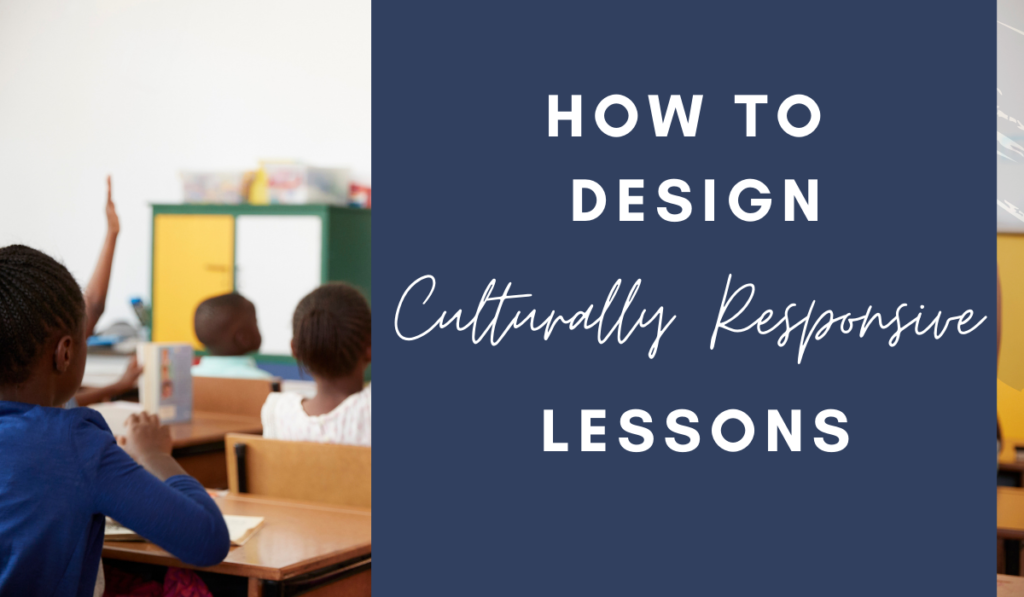
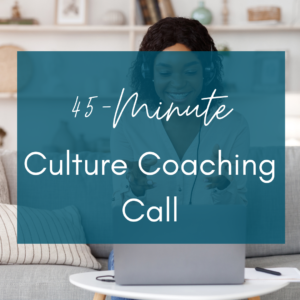
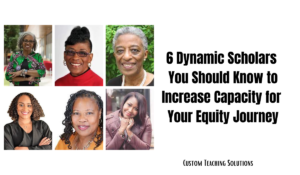

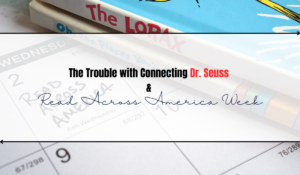
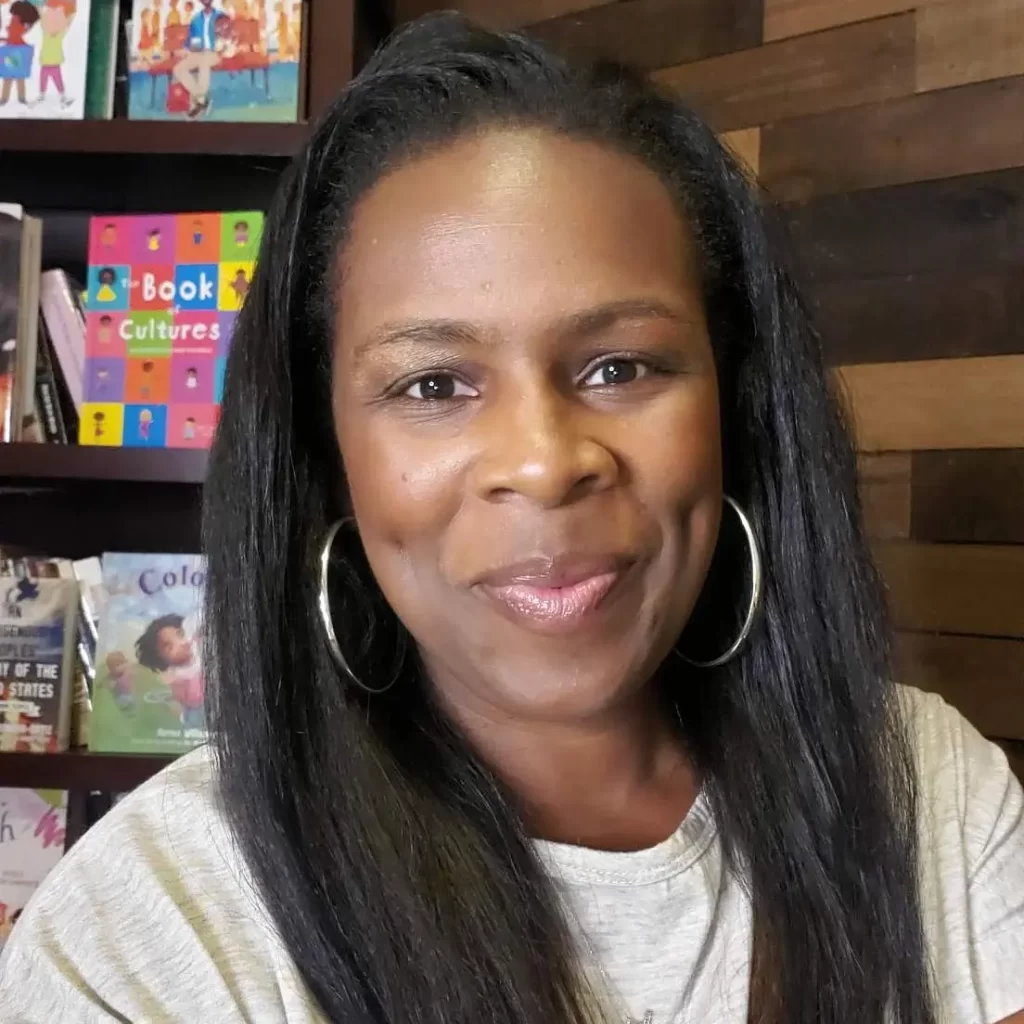
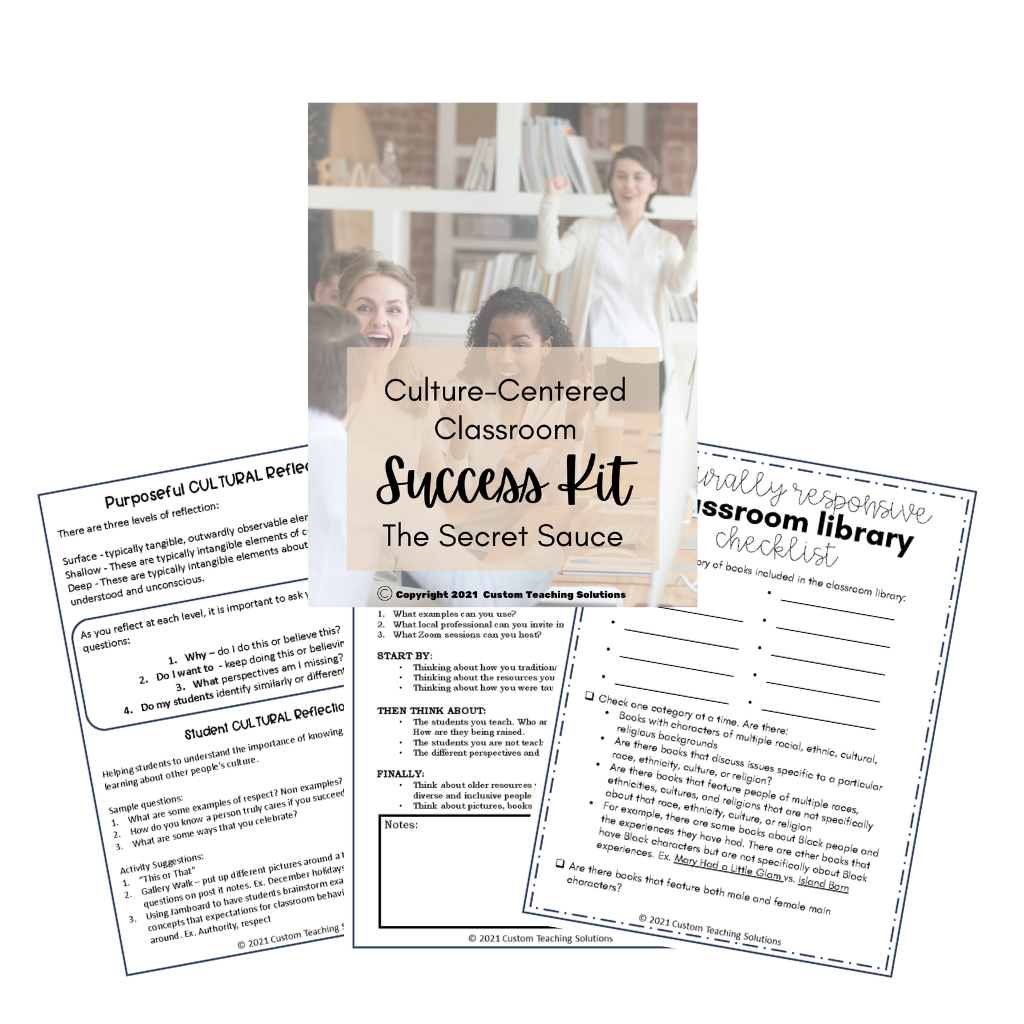
7 thoughts on “How to Design Dynamic Culturally Responsive Lessons”
Pingback: 5 Simple Strategies for Having Complex Conversations in Every Classroom - Custom Teaching Solutions
Pingback: The 5 Habits of a Culturally Competent Educator - Custom Teaching Solutions
Pingback: 3 Natural Ways to Make Any Literature Class Culturally Relevant - Custom Teaching Solutions
Pingback: How to Create a Culturally Responsive Summer Schedule at Home: The Secret Sauce - Custom Teaching Solutions
Pingback: How To Build Self-Efficacy in Students and Boost Math Class Engagement - JBrown Edu
Pingback: How to use The Power of Cultural Self Reflection with your Students - Custom Teaching Solutions
Pingback: Lessons with impact series: How to create powerful culturally responsive science lessons - Custom Teaching Solutions